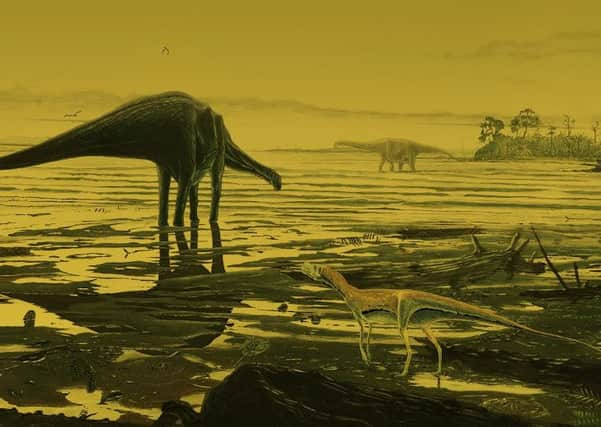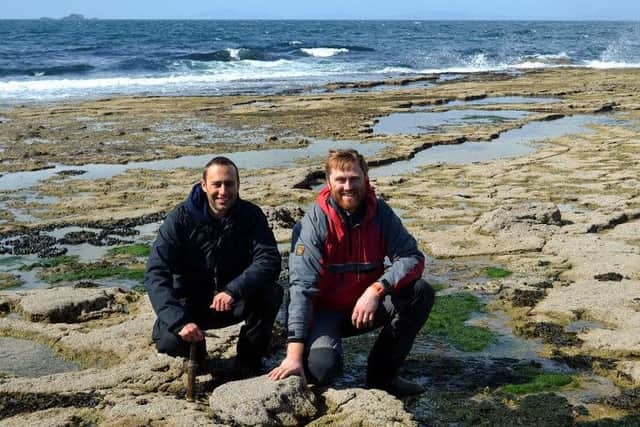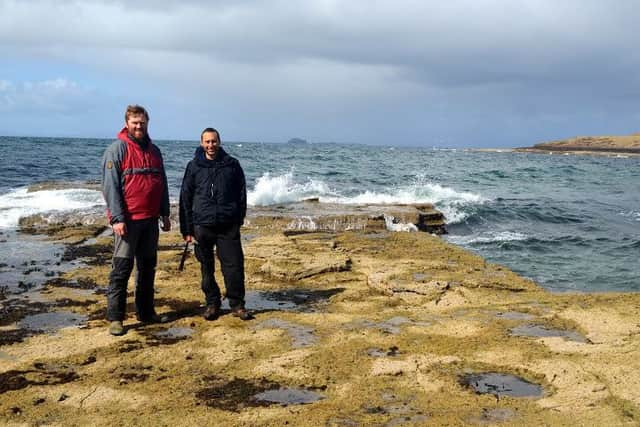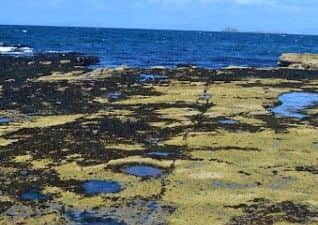Giant Jurassic footprints found on Isle of Skye


Palaeontologists have uncovered hundreds of footprints left on the island by giant plant-eating sauropods 170 million years ago.
The discovery, on the Trotternish peninsula at the north tip of the island, is the biggest dinosaur site yet unearthed in Scotland and the latest in a series of finds that have seen the Misty Isle renamed by some Jurassic Island.
Advertisement
Hide AdAdvertisement
Hide AdScientists from the University of Edinburgh identified the fossilised tracks in layers of rock that would have been at the bottom of a shallow, salt water lagoon millions of years ago.


By analysing the structure of the prints, the team found the dinosaurs were early relatives of well-known species such as brontosaurus and diplodocus.
The studies will help shed light on the evolution of the colossal, long-necked animals, the biggest of all the dinosaurs.
The footprints – the largest of which measures 70cm across – are the first sauropod tracks to be found in Scotland and suggest the Skye monsters would have grown up to 20 metres in length and weighed more than 10 tonnes.
Fossils from the Middle Jurassic period are extremely rare, and the Isle of Skye is one of the few places in the world where they can be found. It is home to 15 per cent of all global finds from that era.


Together with similar tracks found recently in other parts of the world, the Skye footprints reveal that sauropods spent plenty of time in coastal areas and shallow water. It was previously believed they lived only on land.
“The new track site from Skye is one of the most remarkable dinosaur discoveries ever made in Scotland,” said study leader Dr Steve Brusatte, from the university’s School of GeoSciences.
“There are so many tracks crossing each other that it looks like a dinosaur disco preserved in stone.
Advertisement
Hide AdAdvertisement
Hide Ad“By following the tracks you can walk with these dinosaurs as they waded through a lagoon 170 million years ago, when Scotland was so much warmer than today.


“What’s really important about Skye is it’s the only place in Scotland where you can find dinosaurs. It’s also one of the few places in the world where you can find dinosaurs from this age.
“This is a time where there aren’t many fossils, and it’s just lucky that Scotland has them. It makes this discovery doubly important.”
His colleague Dr Tom Challands described studying the site as “exhilarating”.
He added: “But the best thing is this is only the tip of the iceberg.
“I’m certain Skye will keep yielding great sites and specimens for years to come.”
Marks left by theropods – carnivores that walked on two legs – can be seen on a beach near Staffin, while the world’s tiniest dinosaur footprint, made by another biped, was discovered on the island in 2004.
Earlier this year bones found in 1959 were identified as a previously unknown marine reptile unique to Scotland.
Large carnivorous creatures such as megalosaurus and the vegetarian stegosaurus are also known to have roamed Skye.